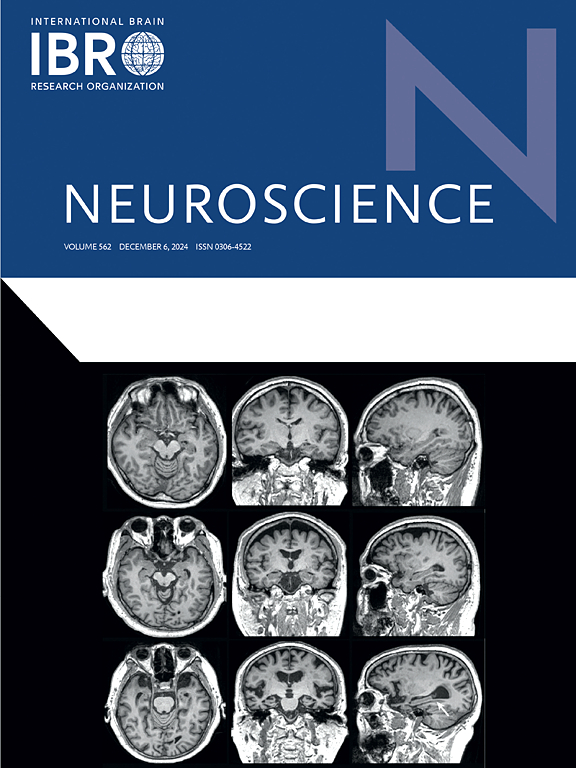三种不同频率微磁刺激对小鼠海马CA1神经元电活动的影响
IF 2.9
3区 医学
Q2 NEUROSCIENCES
引用次数: 0
摘要
频率在利用磁场调节神经电活动中是必不可少的。目前的报告集中在100hz或更低。为了揭示磁刺激频率参数对脑电活动的影响,有必要研究其他较高的磁刺激频率。本文对C57小鼠海马CA1区锥体神经元进行了检测。采用定制的亚毫米尺寸微磁刺激(μMS)装置。在磁场强度为1 mT的条件下,选择15 Hz、3 kHz和70 kHz三个磁场频率,采用全细胞膜钳法对CA1上游的CA3区神经元进行精确靶向磁刺激。研究了三种不同磁刺激频率对海马CA1区神经元动作电位(AP)、钠通道电流(INa)和瞬态外向钾通道电流(IA)的影响。15 Hz抑制CA1区锥体神经元的兴奋性;3 kHz的磁刺激有促进作用,而70 kHz的磁刺激有更明显的促进作用。15赫兹的磁场刺激降低了神经元的兴奋性,而3和70 kHz的磁场刺激增加了神经元的兴奋性。本文章由计算机程序翻译,如有差异,请以英文原文为准。
Effect of three different frequencies of micro-magnetic stimulation on the neuronal electrical activity of the hippocampal CA1 neurons in mice
Frequency is essential in regulating neuroelectric activity using magnetic fields. Current reports focus on 100 Hz or less. Studying other relatively high magnetic stimulation frequencies is necessary to reveal the influence of magnetic stimulation frequency parameters on electrical activity.This paper examined the pyramidal neurons in the CA1 region of the hippocampus of C57 mice. A custom-built micro-magnetic stimulation (μMS) device with sub-millimeter dimensions was utilized. Three magnetic field frequencies of 15 Hz, 3 kHz, and 70 kHz were chosen at a magnetic field strength of 1 mT. Precision-targeted magnetic stimulation of CA3 area neurons upstream of CA1 by whole-cell membrane clamp method. The effects of three various magnetic stimulation frequencies on the action potential (AP), sodium channel current (INa), and transient outward potassium channel current (IA) of neurons in the hippocampal CA1 area were investigated. 15 Hz inhibited the excitability of pyramidal neurons within the CA1 area; 3 kHz had a facilitating effect, while the 70 kHz magnetic stimulation had a more pronounced facilitating effect. Magnetic field stimulation at 15 Hz decreased neuronal excitability, whereas magnetic field stimulation at 3 and 70 kHz increased neuronal excitability.
求助全文
通过发布文献求助,成功后即可免费获取论文全文。
去求助
来源期刊

Neuroscience
医学-神经科学
CiteScore
6.20
自引率
0.00%
发文量
394
审稿时长
52 days
期刊介绍:
Neuroscience publishes papers describing the results of original research on any aspect of the scientific study of the nervous system. Any paper, however short, will be considered for publication provided that it reports significant, new and carefully confirmed findings with full experimental details.
 求助内容:
求助内容: 应助结果提醒方式:
应助结果提醒方式:


